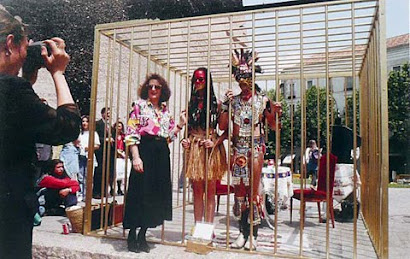
Upon entering, you walk down a ramp and board the ship, with no immediate greeting. I followed some laminated signs until I entered the main deck of the ship, which was converted into a small gift shop, and a display area for various artifacts. I wasn't sure what to expect on this museum-boat hybrid, but it did in fact have some "exhibition" qualities to it.
As soon as I entered, I was greeted by the two volunteers on duty that day. One at the register, one at the ready to give me a tour, despite the fact that I was the only one there. I thought that was pretty nice. The docent's name was Charlie and he was clearly passionate about this boat. That was a reoccurring theme through out my visit - the museum has no issue getting volunteers, because people are very passionate about it's history and it's future. It is completely volunteer run, and Charlie told me that there are roughly 100 volunteers, about 50 of which are considered "active". This includes both docents and other "museum people" as well as a number of certified steam engineers who still work on the mechanical aspects of this boat to keep it in running condition. While it is usually docked, it still runs, and hits the river a couple times a year.
Just as Charlie started up my tour, some other people trickled in and were invited to join us. During my span on the boat, I mostly saw families with small children, although Charlie told me they can't really pin down their "type" of visitor. The tour consisted of a balance between historical background, addressing of the artifacts on the main deck, and quite a bit of the ship itself. I found this to be a very interesting concept as far as museums go - the space that holds the "museum" also being a part of it..an artifact in and of itself.
There was a very personalized touch to the tour. Charlie was very open to answering questions. He told me in our one on one conversation later that he finds it very important to emphasize the ship itself, as well as the dedicated "river pilots" who still come in twice a week and keep her running. There seems to be a fissure between the attitudes of the "museum folk" and the old guys working on the engine downstairs. They each see the boat as theirs. He also noted that we live in "such a litigious society that it's a bear to keep a captain", although the boat is certified to sail with 100 passengers.
The presence of those river pilots is felt, despite their literal absence that day. Their coffee mugs hang in a break area, their chairs still arranged for meeting. There was really no sectioning off between those "living" sections of the boat, and those meant more for display. The entire lower deck holds the engine, and we spent just as much time down there as we did looking at ship models and old divers helmets upstairs.
When I asked Charlie what he thought the museum needed, one of his first off the cuff responses was "We really need someone who speaks Spanish" as a docent. He then went on to explain to me that the institute of the museum actually owns many many more artifacts than it has space to show on this boat. He told me there was once a mainland component, but that now much of the collection lies in a basement storage facility somewhere. They want to move the boat to Centenial Mill, and convert that space into a larger museum to showcase their collection, but as is expected, they have funding problems there. They receive no state funds, so they rely entirely on the small admission fees and donations. Charlie told me that they do get some contributions from large local corporations as well, from time to time. I personally think they could use a more informative website, but other than that, I understand the limitations they face.
I think the most striking part of my experience, besides spending 3 hours speaking with Charlie and the other very nice volunteer, Davey, was the moment I was about to leave. Three visitors came through the door with service dogs - all three were blind. As I thanked the volunteers for their time, Charlie set out to give a tour to the blind visitors, addressing the more "tactile" features. I was unexpectedly moved by this...the fact that the museum COULD still be interesting to these visitors on information and tactility alone, and that Charlie did so without hesitation.
-Jillian
Oregon Maritime Museum
http://www.oregonmaritimemuseum.org/
$5 for adults ($1 off with AAA membership)
Located on the westside of the Willamette between the Morrison and Burnside Bridges
Wednesday - Sunday 11:00am - 4:00pm










No comments:
Post a Comment